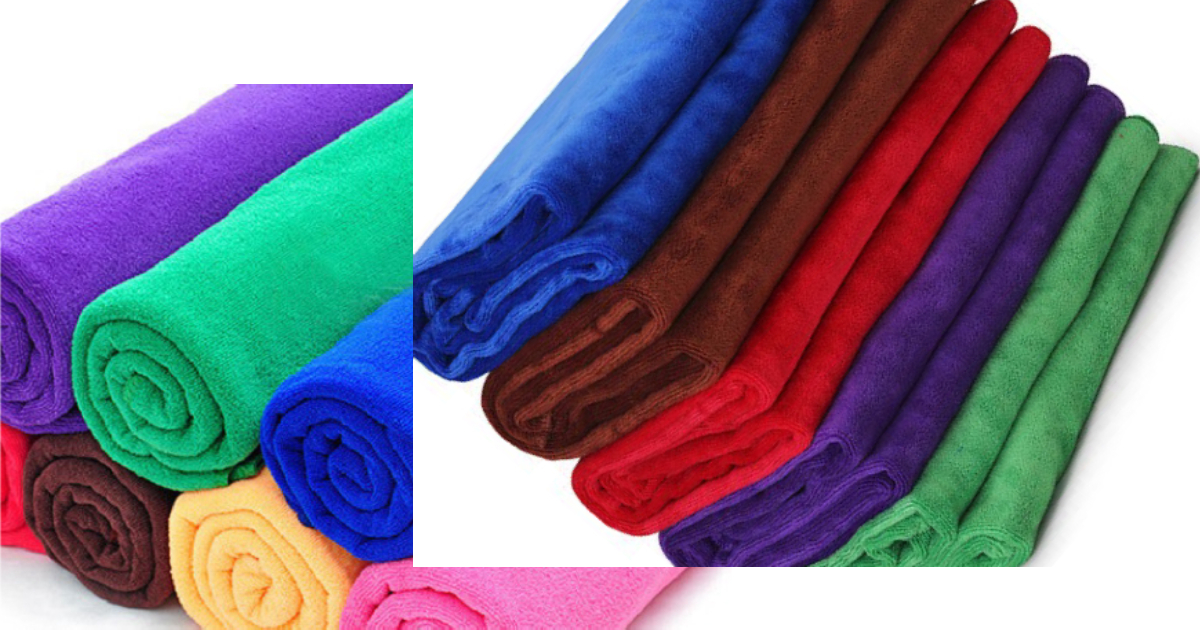How To Wash Microfiber Towels
The split fibers and the size of the individual filaments make the cloths more effective than other fabrics for cleaning purposes. The structure traps and retains the dirt and also absorbs liquids. Unlike cotton, microfiber leaves no lint, the exception being some micro suede blends, where the surface is mechanically processed to produce a soft plush feel.
For microfiber to be most effective as a cleaning product, especially for water-soluble soils and waxes, it should be a split microfiber. Non-split microfiber is little more than a very soft cloth. The main exception is for cloths used for facial cleansing and for the removal of skin oils (sebum), sunscreens, and mosquito repellents from optical surfaces such as cameras, phones, and eyeglasses wherein higher-end proprietary woven, 100% polyester cloths using 2 µm filaments, will absorb these types of oils without smearing.
Microfiber is used in many professional cleaning applications, for example in mops and cleaning cloths. Although microfiber mops cost more than non-microfiber mops, they may be more economical because they last longer and require less effort to use.
Microfiber textiles are designed for cleaning clean on a microscopic scale. According to tests using microfiber materials to clean a surface leads to reducing the number of bacteria by 99%, whereas a conventional cleaning material reduces this number only by 33%. Microfiber cleaning tools also absorb fat and grease and their electrostatic properties give them a high dust-attracting power.
Microfiber cloths are used to clean photographic lenses as they absorb oily matter without being abrasive or leaving a residue, and are sold by major manufacturers such as Sinar, Nikon, and Canon. Small microfiber cleaning cloths are commonly sold for cleaning computer screens and eyeglasses.
Microfiber is unsuitable for some cleaning applications as it accumulates dust, debris, and particles. Sensitive surfaces (such as all high-tech coated surfaces e.g. CRT, LCD, and plasma screens) can easily be damaged by a microfiber cloth if it has picked up grit or other abrasive particles during use. One way to minimize the risk of damage to flat surfaces is to use a flat, non-rugged microfiber cloth, as these tend to be less prone to retaining grit.
Rags made of microfiber must only be washed with regular laundry detergent, not oily, self-softening, soap-based detergents. A fabric softener must not be used. The oils and cationic surfactants in the softener and self-softening detergents will clog up the fibers and make them less absorbent until the oils are washed out. Also, since microfibre cloth attracts much soil and holds water tightly, it provides an ideal nutritional environment for various microorganisms.
Microfiber materials such as PrimaLoft are used for thermal insulation as a replacement for down feather insulation in sleeping bags and outdoor equipment, because of their better retention of heat when damp or wet. Microfiber is also used for water insulation in automotive car covers. Depending on the technology the fiber manufacturer is using, such material may contain from 2 up to 5 thin layers, merged together. Such combination ensures not only a high absorption factor but also the breathability of the material, which prevents the greenhouse effect.
Follow our posts on your preferred social media:
Twitter, Facebook, Google+, Linkedin. Shop and Detailing


Pingback: Luxury Car Santa's Gift | I'm Your Friend in Car Business